Seaweeds of the South African South Coast


Order Fucales
Family Sargassaceae
Anthophycus longifolius (Turner) Kützing 1849: 605
Plants dark brown to yellowish-brown, up to about 1 m long, comprising conical holdfast to 2 cm wide that bears one to several perennial main axes up to 18 cm long, foliose when young, somewhat condensed compared to upper branches. Primary laterals branching distichously from margins of main axes, but main axes often becoming terete and appearing to bear branches radially (Jensen 1974). Main axis bearing several primary laterals annually that drop off leaving stumps up to 2 mm long. Primary laterals up to 60 cm long and varying in width from 0.5 – 4.5 cm, irregularly or regularly serrated, foliose, strongly compressed with obvious midrib.
Fertile secondary laterals bearing many branched narrow (up to maximum ca. 1 mm diameter) terete axes bearing clusters of short (to ca. 1mm) terete elongate receptacles. These receptacular branchlets arise in the axils of subtending leaves, with several of them bearing a single ovoid vesicle proximally. Each vesicle often bearing a single leaflet apically.
Collections, ecology and regional distribution
Recorded from Platboombaai, just west of Cape Point, eastwards along the entire coast and into Mozambique (17-58). A subtidal species that can form large beds at depths from a few to at least 10 m, sometimes found in rock pools and the lower eulittoral.
World distribution: Also recorded from Mozambique and India (Silva et al. 1996).
Type locality: In the Indian Ocean (Silva et al. 1996).
Note: formerly known as Sargassum longifolium (Turner) C. Agardh, Anthophycus was re-instated as separate from Sargassum by Jensen (1974), a conclusion borne out by the molecular study of Draisma et al. (2010).
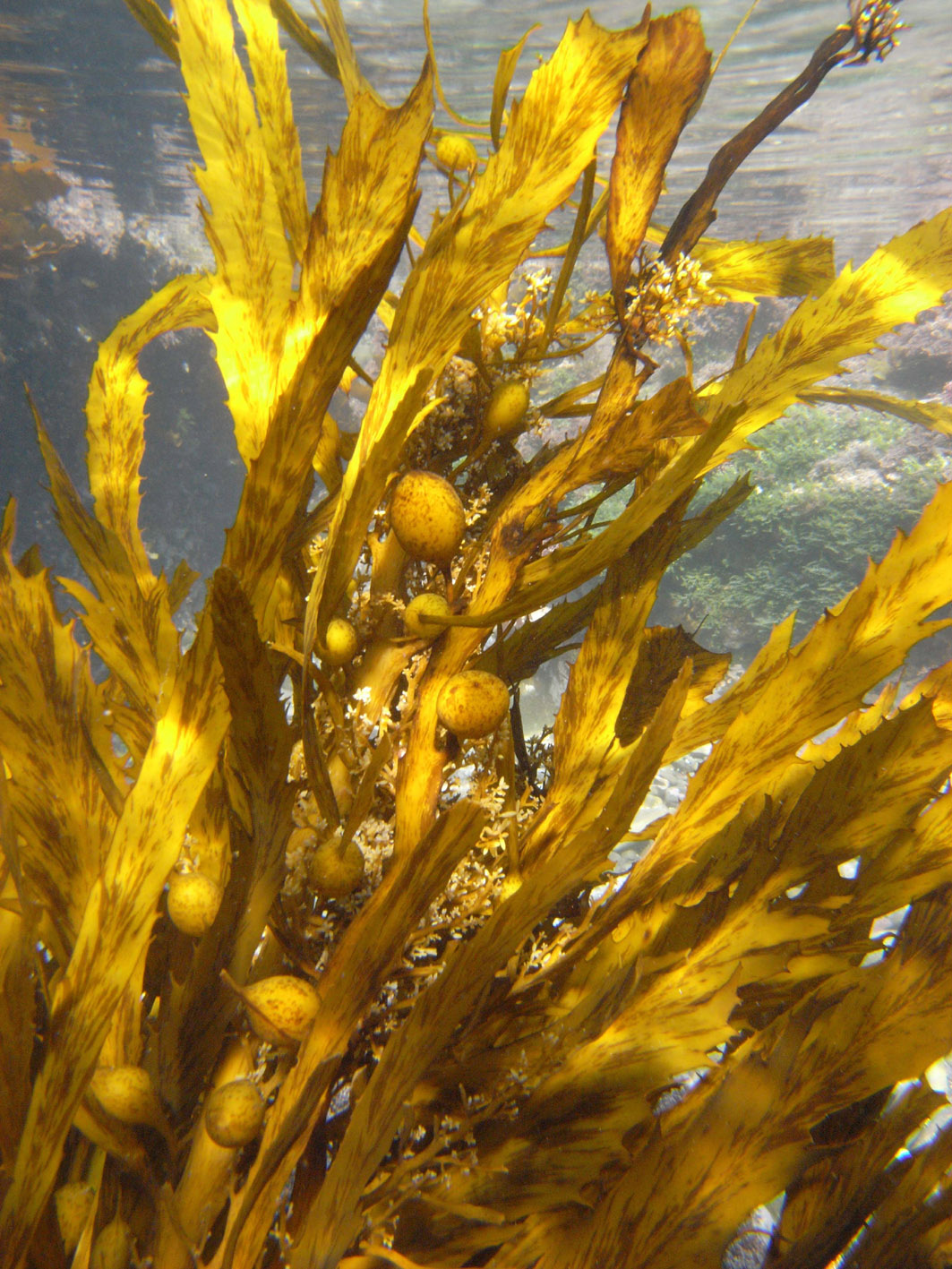
Anthophycus longifolius, rather yellow plants in a rock pool, Double Mouth near Morgan Bay.
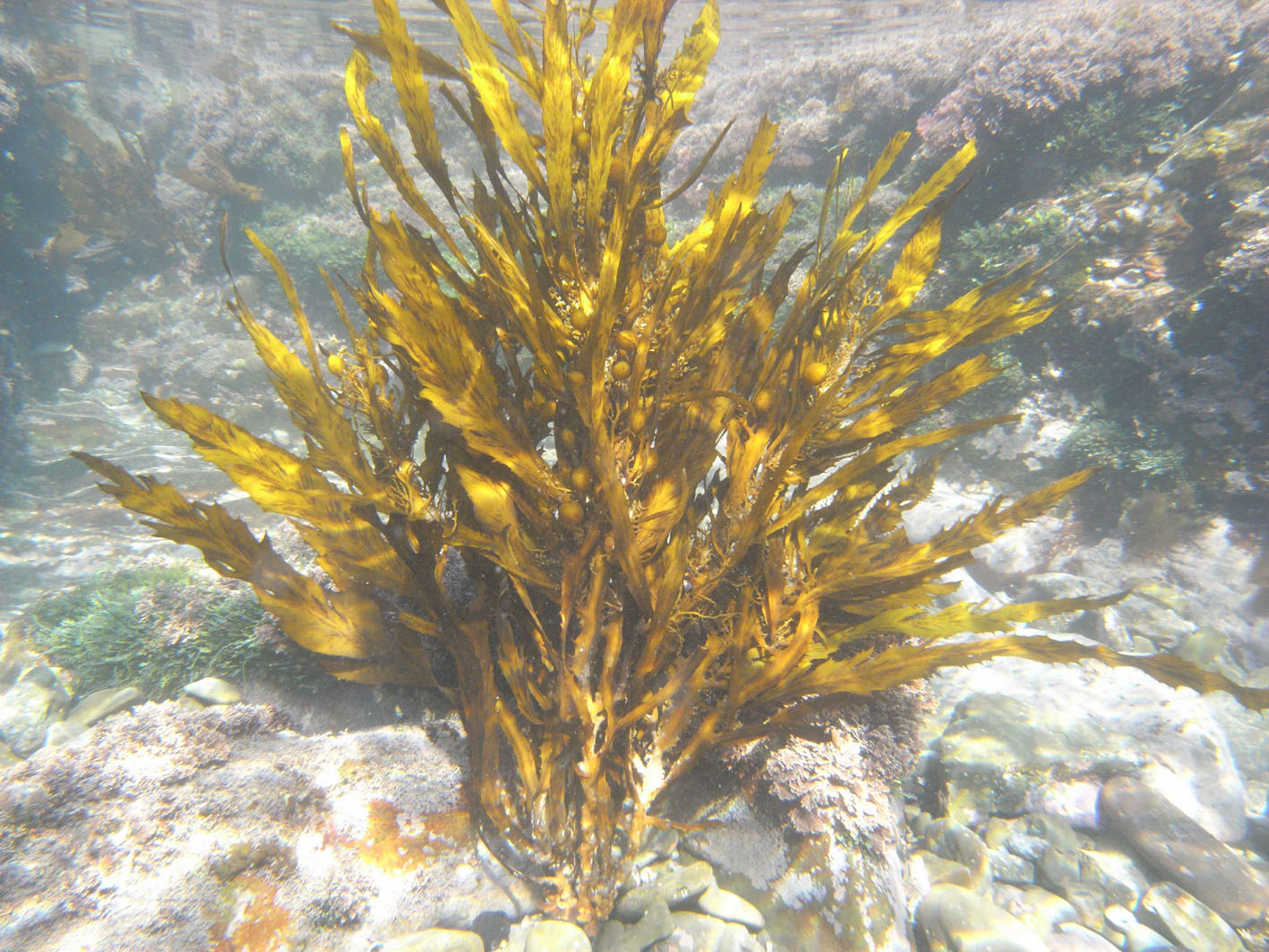
Anthophycus longifolius, whole plant, in a rock pool, Double Mouth near Morgan Bay.
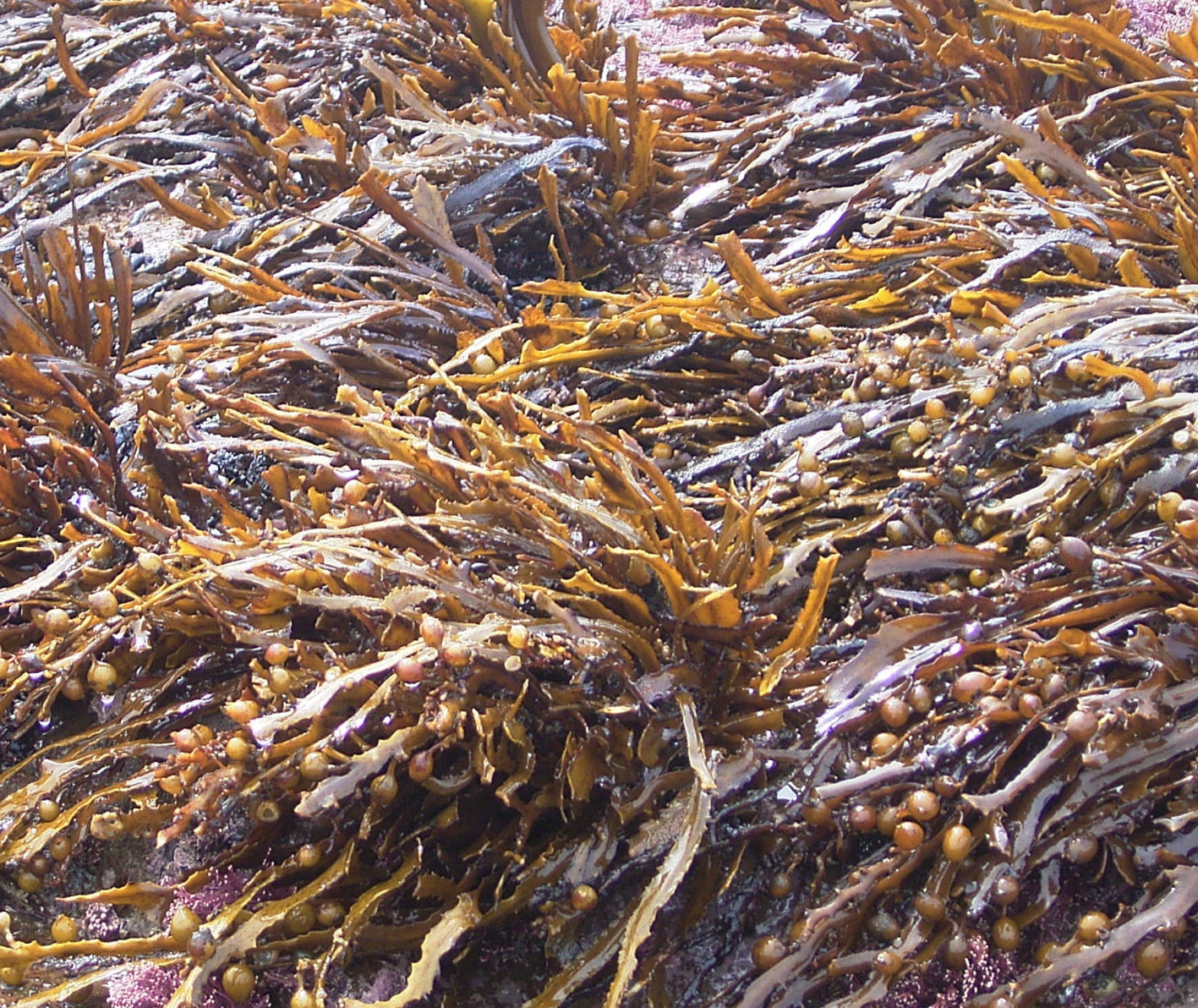
Anthophycus longifolius, a stand of battered plants on intertidal platforms, Double Mouth near Morgan Bay.
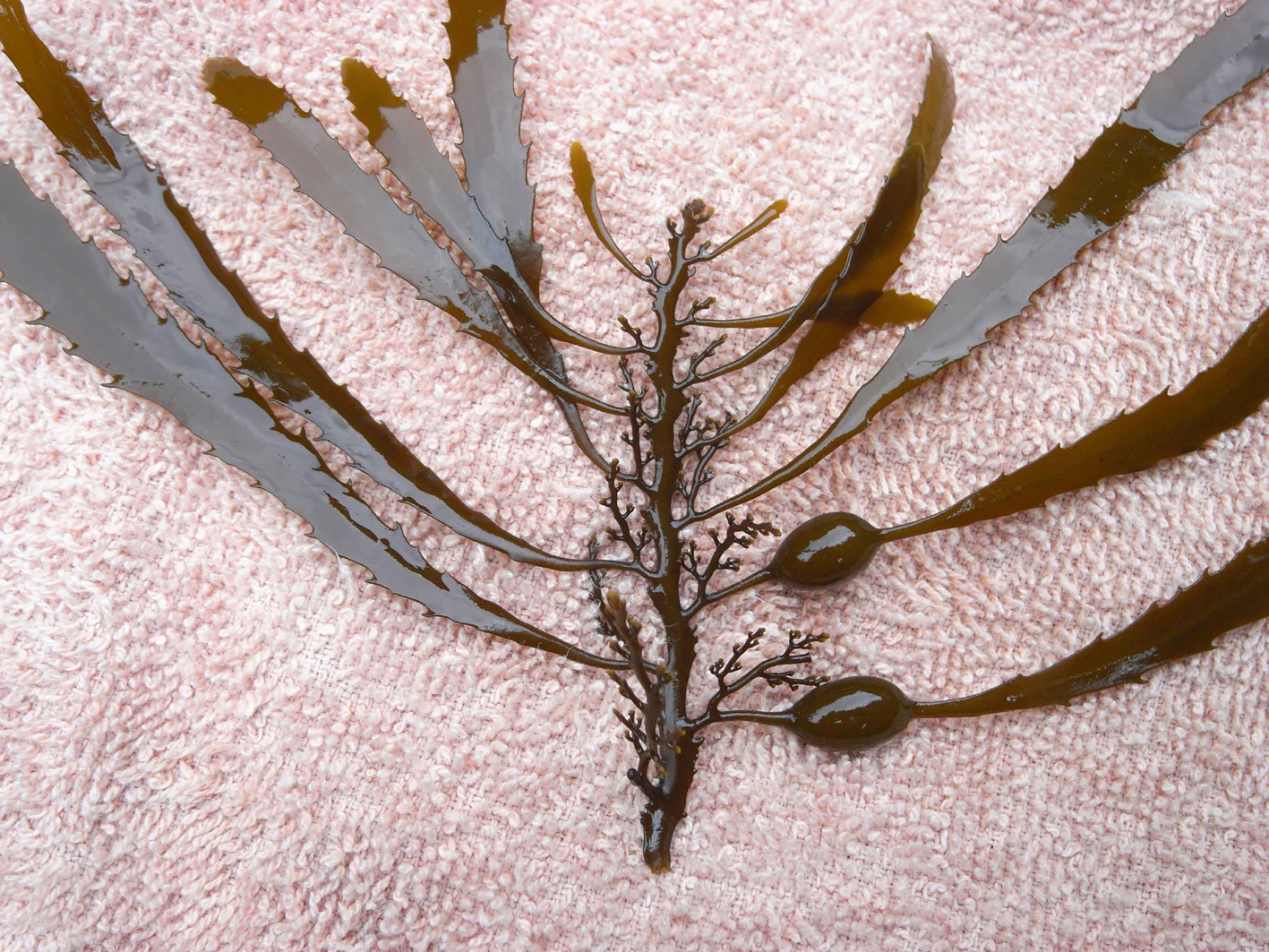
Anthophycus longifolius, part of a thallus showing detail of receptacular branchlets and vesicles.
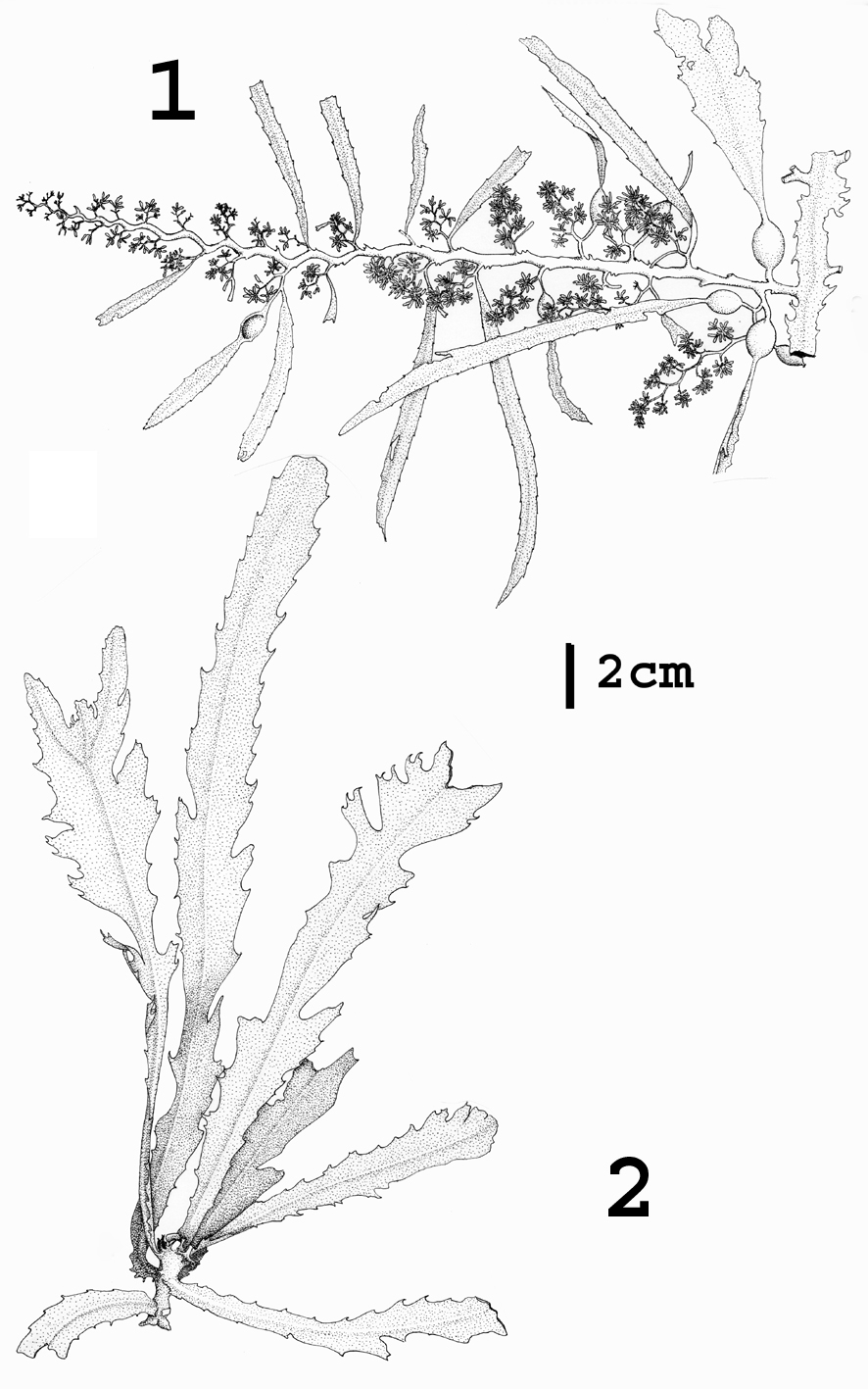
Anthophycus longifolius. 1. Fertile branch of mature plant. 2. Habit of juvenile plant. Reproduced from Stegenga et al. (1997).
References Anthophycus
Draisma, S.G.A., Ballesteros, E., Rousseau, F. & Thibaut, T. (2010). DNA sequence data demonstrate the polyphyly of the genus Cystoseira and other Sargassaceae genera (Phaeophyceae). Journal of Phycology 46(6): 1329-1345.
Jensen, J.B. (1974). Morphological studies in Cystoseiraceae and Sargassaceae (Phaeophyceae) with special reference to apical organization. University of California Publications in Botany 68: 1-61.
Kützing, F.T. (1849). Species algarum. pp. [i]-vi, [1]-922. Lipsiae [Leipzig]: F.A. Brockhaus.
Silva, P.C., Basson, P.W. & Moe, R.L. (1996). Catalogue of the benthic marine algae of the Indian Ocean. University of California Publications in Botany 79: 1-1259.
Stegenga, H., Bolton, J.J. and R. J. Anderson. 1997. Seaweeds of the South African west coast. Contributions from the Bolus Herbarium 18: 640 pp.
Cite this record as:
Anderson RJ, Stegenga H, Bolton JJ. 2016. Seaweeds of the South African South Coast.
World Wide Web electronic publication, University of Cape Town, http://southafrseaweeds.uct.ac.za; Accessed on 07 January 2026.